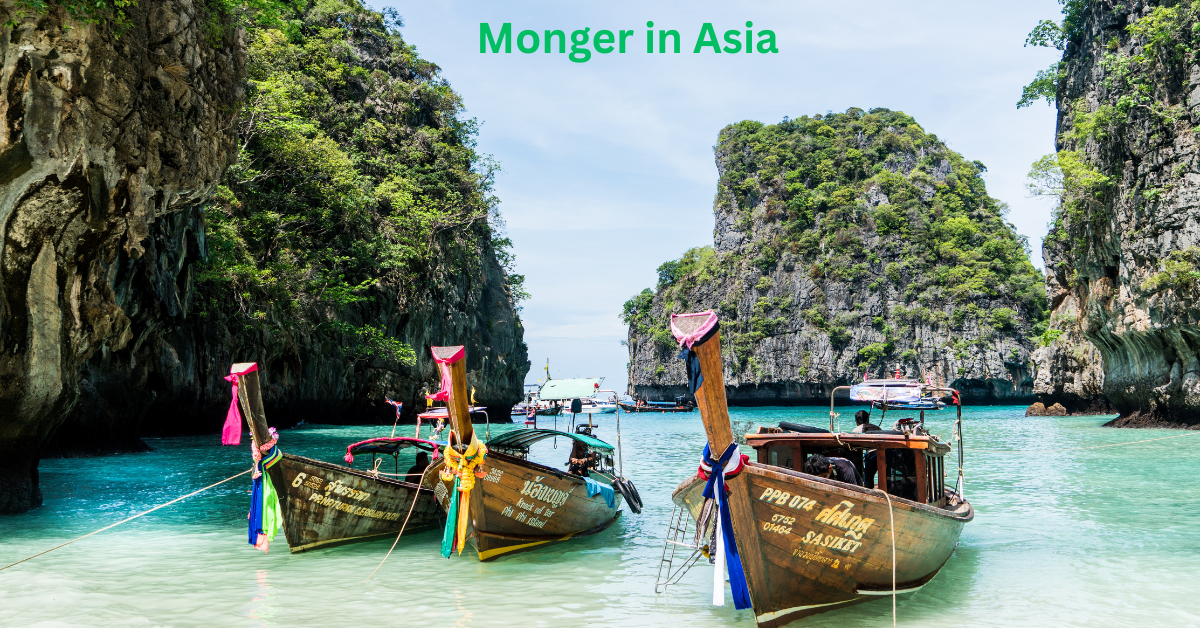Asia has historically served as a center for international trade. Since ancient times, products, culture, and knowledge have been dispersed around the continent by traders, merchants, and artisans. A common name for these individuals is “monger.” Mongers were instrumental in forming the economics and social structures of several Asian nations. The name “Monger in Asia” still has meaning today, referring to both contemporary companies that are thriving in this multicultural area as well as traditional dealers.
Who Makes a Monger?
A person who dealt or traded in a certain sort of thing was usually known as a monger. The term is sometimes used in reference to the product they sell, for example, “fishmonger” to describe a person who sells fish, or “ironmonger” to represent a person who trades in iron. As suppliers of basic goods to the general public, mongers have been an essential part of Asia’s economic structure for decades.
Throughout many Asian nations, mongers may frequently be seen in busy marketplaces offering a wide range of goods, including metals, textiles, and food items. They were important players in the community’s economy in addition to being traders. For those attempting to get necessities, life would have been considerably more difficult without them. Traditional mongers can still be seen at local marketplaces in various regions of Asia. Visit for more information: Roxrigible.com
Mongers in Ancient Asia
Mongers served as the heart of this trade route, which linked Asia with Europe and the Middle East. These merchants made it easier to exchange items like gold metals, silk, and spices. The effect of mongers in Asia during these times was significant. They traded not just material commodities but also concepts, customs, and innovations.
Silk merchants, for example, were quite important in China. The commerce of silk, a highly prized commodity, gave prosperity to the area. Equally significant were dealers of spices, such as cardamom, cinnamon, and pepper, which were in high demand in the West and came from India. The basis for contemporary trade and business in Asia was established by these ancient merchants.
Asian Modern-Day Mongers
In Asia, the job of the monger has changed to reflect the fast-paced modern environment. Customary stores have had to adapt to the rise of the digital economy and the quickening pace of globalization. Traders from all walks of life, from vegetable and fish mongers to shoemakers, still set up shop in thriving markets in countries like Bangkok, Mumbai, and Shanghai. They currently coexist, meanwhile, with online marketplaces that enable consumers to buy products at their convenience from home.
A new class of con artists has emerged in Asia as a result of the growth of e-commerce. These contemporary shops offer their items online on sites like Tokopedia, Alibaba, and Lazada. The means of trade have changed, but the spirit of the monger has not. These merchants, whether they run online or in physical locations, are vital to the economy since they provide a wide range of products to consumers around the continent.
The Importance of Mongers in Asian Culture
Fraudsters are more than just merchants in Asia. They are essential to preserving the social order. Many Asian cultures make it a regular ritual to visit the local market. People depend on their local mongers for fresh fish, veggies, and other needs and learn to know them personally. These interactions create a sense of community where long-lasting loyalty and trust are fostered.
Throughout rural Asia, mongers are frequently the community’s lifeblood. They transport items from the city to isolated locations with limited access to necessities. In Asia, a monger’s job description extends beyond simple trade to include giving essential services to those who may otherwise be isolated from the rest of the economy.
The Difficulties Asian Mongers Face
Despite their significance, Asian mongers confront a number of difficulties in the current economic climate. It has become more challenging for traditional mongers to compete with the emergence of major supermarkets and international retail chains. These huge corporations may provide cheaper pricing and a greater selection of items, making it tougher for small sellers to thrive.
Furthermore, physical market vendors are finding it more difficult to retain their clientele as more people shop online. Younger generations, particularly those living in cities, are more likely to shop on their smartphones, choosing the ease of home delivery over going to the market.
However, many mongers in Asia are adjusting to these developments. In an effort to connect with more people, some have embraced social media and online markets. They can continue to operate their conventional businesses and appeal to a contemporary clientele by utilizing technology.
The Future of Monger in Asia
The role of the monger is anticipated to change more as Asia develops. One of this region’s distinguishing features is the fusion of tradition and modernity, and mongers are no different. They blend the efficiency and reach of contemporary technology with the human touch and knowledge of a traditional dealer, so encapsulating the best of both worlds in many respects.
Asia’s mongers will remain vital to the continent’s economy, whether they are operating through an internet platform or a local market. Their capacity for innovation and adaptation in the face of adversity is evidence of their resilience. The expansion of Asia’s economy will present mongers with fresh and exciting prospects for success.
Conclusion
Monger in Asia boasts a centuries-long history of mongering. The function of the monger has been crucial to the region’s economic and cultural growth, from the ancient Silk Road traders to the modern e-commerce merchants. These traders’ adaptability and tenacity guarantee that they will remain an essential component of Asia’s markets despite the problems of the contemporary world.
Remember the mongers who toil diligently to supply you the necessities the next time you purchase online or in a local market in Asia. Asian mongers, whether they be contemporary or traditional, are a permanent fixture in the lively and diversified economies of the continent.





